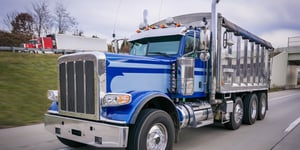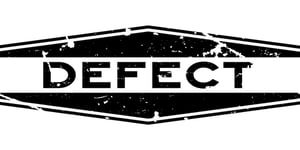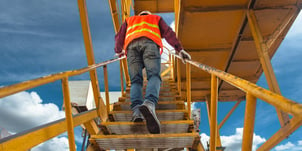
Contractors Insurance is designed to help protect your business from various risks, including the risk of liability. A contractor can be sued for a variety of reasons – breach of contract, defects, employee and customer relations, project delays, etc. – and no business is immune to these risks.
According to a Small Business Administration (SBA) survey on the impact of litigation on small businesses, 36-53% of small businesses (fewer than 50 employees) were involved in filed civil lawsuits, resulting in $3,000 to $150,000 in legal costs for actual litigation. The survey report also states, “The impact of litigation on businesses goes well beyond the purely financial impact of legal fees and damages. Most small business owners are invested personally in their businesses; litigation causes not just financial loss, but also substantial emotional hardship, and often changes the tone of the business.”
Taking steps to minimize liability risks is just good business. Here are nine tips:
-
- Identify Potential Risks – Contractors are surrounded by potential liability risks, and the first step to reducing those risks is to identify them. Take time to look at your overall business practices and potential hazards at each project.
- Avoid accidents, including the Fatal Four – Every employer is obligated to keep employees safe, which can be a challenge in an industry like construction where hazards loom around every corner. According to the Occupational Safety & Health Administration (OSHA), 5,333 workers died on the job in 2019, and about 20% of fatalities in private industry were in construction. OSHA identified four hazards responsible for 63.7% of construction worker deaths in 2016, known as the “fatal four.” All workplace safety risks should be addressed, and starting with the fatal four – falls, struck by an object, electrocutions, caught-in/between - is a great place to start.
- Understand Safety Laws – The Occupational Safety and Health Act of 1970 was created to help ensure safe and healthful working conditions for workers. The result is a set of standards that businesses are required to follow by law. For example, OSHA requires that fall protection be provided for any employee working at an elevation of six feet or more in the construction industry.
- Understand Labor Laws - Fair Labor Standards Act mandates are designed to protect workers in the U.S. All businesses are required to follow these mandates, which include the establishment of minimum wage, overtime pay, record keeping, and youth employment standards.
- Avoid Delays – Delays are often unavoidable in the construction industry, and they are one of the most common disputes between construction companies and clients. Even if there is nothing in your contract about penalties for delays, common law usually applies, which could force you to compensate your client for loss of rent, storage fees, moving costs, etc. Proper planning can help minimize the risk of delays.
- Provide Quality Work – Shoddy work not only damages your business reputation it can also result in a costly lawsuit. Avoid construction defects, including defects in the design, workmanship, and or materials used, by drafting well-crafted contracts, fulfilling the contract terms, performing and documenting periodic inspections, etc.
- Hire Subcontractors Wisely – When something goes wrong – someone is injured, there’s a crack in the foundation, etc. – the general contractor is often held responsible. Therefore, only hire subcontractors you trust and have a reputation for quality work. Draft a comprehensive contract and ensure they have appropriate insurance.
- Communicate – Good communication – with employees, subcontractors, and clients – is key to the success of any project. Employ communication techniques, such as choosing a suitable communication method, being an active listener, and keeping communication professional at all times.
- Consult a Specialist When Appropriate – If you or your employees don’t have the knowledge or experience to perform a specific task, hire someone who specializes in that task.
- Document – With each project, have a comprehensive contract AND thoroughly document any potential hazards, inspections, accident reports, etc.
- Identify Potential Risks – Contractors are surrounded by potential liability risks, and the first step to reducing those risks is to identify them. Take time to look at your overall business practices and potential hazards at each project.
How to Purchase the Right Insurance
Sometimes, despite your best efforts, you may find yourself on the wrong side of a lawsuit. Thankfully, the right insurance can help minimize the impact of any lawsuit.
The agents at American Insuring Group understand the unique risks contractors face, and – as independent agents – they compare the cost of your coverage with several companies to lower your premiums.
Give one of our contractor insurance specialists a call today at (800) 947-1270 or (610) 775-3848, or connect with us online.



 Construction sites are filled with hazards/risks that cause injuries and fatalities, increasing both direct and indirect costs, such as lost workdays, lower employee morale, and higher
Construction sites are filled with hazards/risks that cause injuries and fatalities, increasing both direct and indirect costs, such as lost workdays, lower employee morale, and higher  Can you imagine trying to complete any construction project without hand or power tools? No, neither can we. But we also can’t ignore the fact that both hand and power tools present many hazards that can cause injuries, and injuries mean higher
Can you imagine trying to complete any construction project without hand or power tools? No, neither can we. But we also can’t ignore the fact that both hand and power tools present many hazards that can cause injuries, and injuries mean higher  As the temperature continues to rise, so do heat-related illnesses among construction workers. The first step to minimizing your risk of these illnesses (and lowering your
As the temperature continues to rise, so do heat-related illnesses among construction workers. The first step to minimizing your risk of these illnesses (and lowering your  Every type of truck – including dump trucks - comes with its own set of unique hazards. If you want to lower the cost of your
Every type of truck – including dump trucks - comes with its own set of unique hazards. If you want to lower the cost of your  Let's face it – no one is perfect. Not even contractors. Construction defects occur, and contractors can be held liable for those defects.
Let's face it – no one is perfect. Not even contractors. Construction defects occur, and contractors can be held liable for those defects. Contractors Insurance
Contractors Insurance The construction industry is filled with risks, but understanding those risks and how to mitigate them can save you a ton of money on your
The construction industry is filled with risks, but understanding those risks and how to mitigate them can save you a ton of money on your  Builders’ Risk Insurance is a type of
Builders’ Risk Insurance is a type of  Construction worksites are filled with potential hazards that
Construction worksites are filled with potential hazards that 



